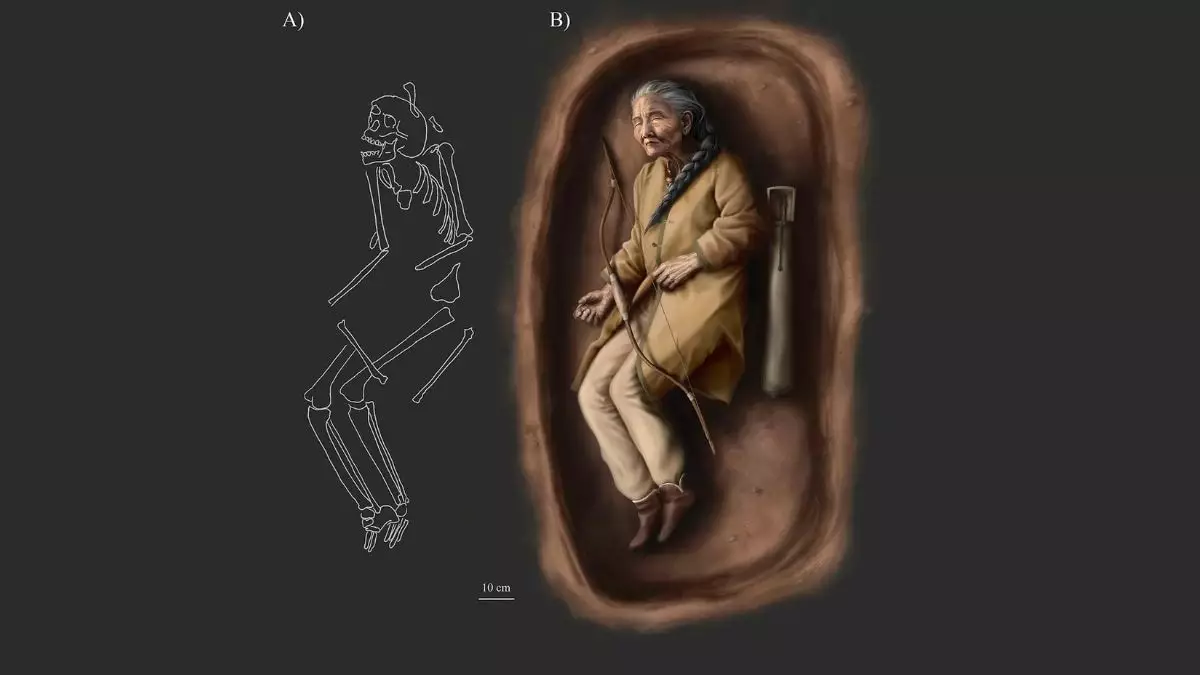Recent archaeological investigations in Hungary have illuminated a unique aspect of life during the 10th century with the discovery of a female burial featuring weapons. This groundbreaking find at the Sárrétudvari-Hízóföld cemetery represents the first confirmed case of such a burial in the Carpathian region, challenging established narratives regarding gender roles and social hierarchies in early Hungarian society.
The skeletal remains, along with an array of grave goods including weaponry, provide a rare opportunity to interrogate the complexities of life during the Hungarian Conquest period. This era was characterized by a tumultuous landscape dominated by mounted archers and frequent conflicts, leading researchers to reassess the place of women in these turbulent times.
Led by Dr. Balázs Tihanyi, the research team undertook a meticulous analysis of the burial contents, which featured items not typically associated with female interments. Alongside weapons, the grave contained personal adornments like a silver penannular hair ring and bell buttons, as well as archery-related artifacts—a combination that curiously merges traditionally masculine and feminine grave goods.
The identification of the burial’s occupant, named SH-63, as female is supported by genetic and morphological testing, despite challenges posed by the preservation status of the skeletal remains. This blend of items complicates preconceived notions about the activities and societal roles of women during this epoch. Furthermore, researchers have tread carefully in drawing conclusions about SH-63’s status as a potential warrior, emphasizing that the mere presence of weapons does not automatically signify a martial identity.
The research highlights that within warrior societies, associations with martial roles are often multi-faceted and context-dependent. The presence of physical indicators, such as joint changes and signs of trauma, could suggest experiences related to horseback riding or weapon usage. However, it is crucial to note that these markers may stem from everyday activities divorced from warfare. Thus, the researchers advise caution when interpreting these findings, advocating for a well-rounded understanding of the individual’s life rather than a reductive view based solely on grave goods.
This archaeological revelation opens the door to reevaluating gender norms and the intricate realities of life in 10th-century Hungary. SH-63’s burial challenges the binary perceptions of gender roles during this period, suggesting that women may have played multifaceted roles in society that extended beyond the domestic sphere. As the research team plans further investigations to analyze other findings from the era, they aim to paint a more comprehensive picture of social dynamics and the complexities surrounding gender during the Hungarian Conquest.
The remarkable discovery at the Sárrétudvari-Hízóföld cemetery not only enriches our understanding of gender roles in the early medieval period but also highlights the importance of ongoing scholarly inquiries into the past. The SH-63 case serves as a poignant reminder that history is often more nuanced than previously thought.


Leave a Reply